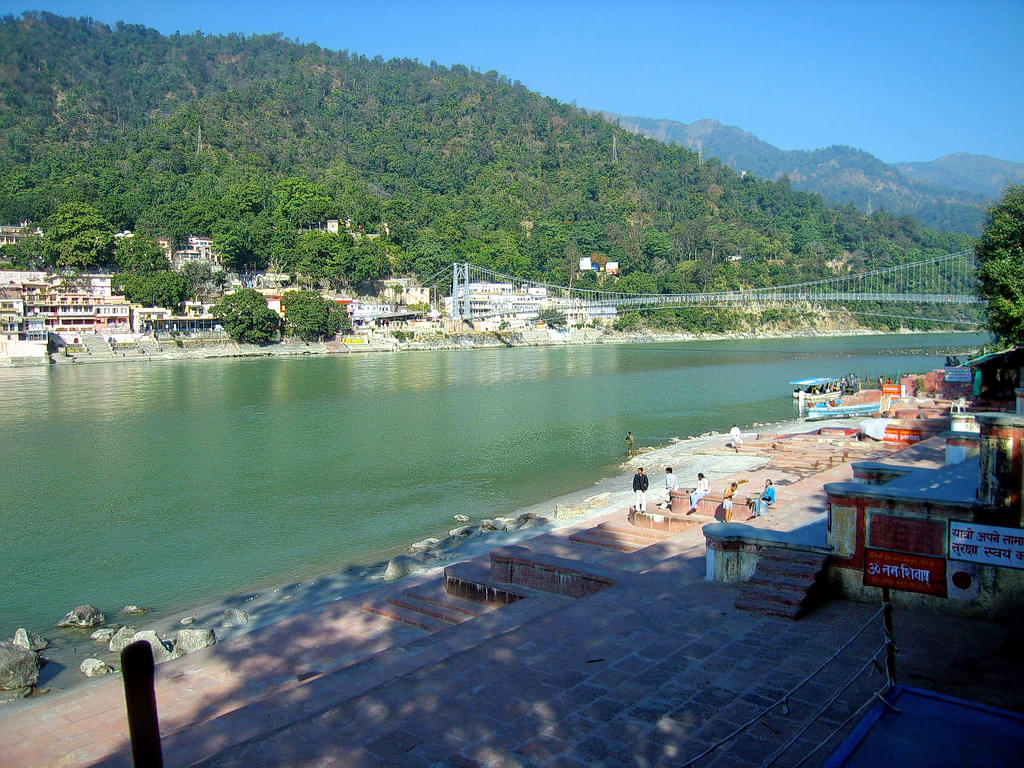About Muni Ki Reti
Muni Ki Reti, Rishikesh
Prime Day & Hours: Weekends, mornings, and evenings
Suggested Duration: 4 - 5 hours
Tickets: Free Entry
Nearest Railway Station: Rishikesh Railway Station, about 3.6 KM away
Nearest Airport: Jolly Grant Airport, Dehradun, about 18.4 KM away
Nearest Bus Stop: Rishikesh Bus Stand, about 2.5 KM away
Muni Ki Reti in Rishikesh is a small town located on the banks of the holy river Ganges, and is one of the most significant places to visit in Rishikesh. This place, Muni Ki Reti, is named after a sage called Muni, who is said to have meditated here for a long time. Due to its location at the sandy banks of the river Ganges, it is named Muni Ki Reti, where 'Reti' refers to the sand, and its name altogether means "The sandy banks of Muni".
Muni Ki Reti is considered to be an important center for meditation and yoga in India. This place is peaceful and serene, attracting spiritual seekers from around the world. This town has number of ashrams, yoga centers, and meditation centers that offer various courses and programs for people who are eager to join. Along with that, this town is surrounded by lush greenery and beauty. Parmarth Niketan Ashram is one of the most famous places in Muni ki reti.
Another major attraction in Muni Ki Reti is Triveni Ghat, which marks the confluence of three rivers, Ganga, Yamuna, and Saraswati. Overall, Muni Ki Reti is a spiritual place that offers natural beauty, spiritual power, and culture altogether.
Muni Ki Reti Highlights
• Explore Muni Ki Reti in Rishikesh, the spiritual place where sages began their journeys into the Himalayas for deep meditation.
• Walk along serene riverbanks lined with ashrams, offering spirituality, yoga, and daily rituals.
• Visit beautiful temples and ghats that reflect the area’s deep-rooted connection with Vedic traditions and yogic culture.
• Attend spiritual satsangs and aartis in nearby ashrams that bring together seekers from across the world.
How To Reach Muni Ki Reti
By Car/Taxi: Muni Ki Reti is about 2.5 KM away from Rishikesh city center, you can reach there in around 12 minutes via NH 34. Visitors can also take taxis from the city center to Muni Ki Reti.
Best Time To Visit Muni Ki Reti
Peak Season (March to June)
- Weather Insights: Warm days with cool mornings and evenings; average temperatures range from 20°C to 35°C.
- Things to Do: Enjoy riverside walks, attend yoga retreats, and explore nearby spiritual hubs like Parmarth Niketan and Ram Jhula.
Moderate Season (October to February)
- Weather Insights: Pleasant to chilly weather, especially in the mornings and nights; ideal for outdoor activities.
- Things to Do: Participate in meditation sessions, explore local temples, and witness the serene winter Ganga aarti.
Low Season (July to September)
- Weather Insights: Monsoon rains create lush scenery but can disrupt outdoor plans due to slippery paths and rising water levels.
- Things to Do: Relax indoors with spiritual reading, attend ashram talks, or experience the peaceful side of Muni Ki Reti without crowds.
Muni Ki Reti Other Essential Information
Know Before You Go
- Dress modestly as the area is known for its spiritual and traditional environment.
- Carry essentials like water, sunscreen, and light snacks, especially during summer visits.
- Avoid peak afternoon hours in summer to skip the heat and crowd.
- Plan if you wish to attend yoga or meditation retreats, as spots can fill up.
- Respect the silence around ashrams and spiritual spaces to maintain a peaceful vibe.
Attend a Meditation Session
Visitors can join a peaceful guided meditation session at one of the many ashrams in Muni Ki Reti. Surrounded by spiritual energy and the sound of flowing Ganges, these sessions offer clarity, calm, and a sense of deeper connection for seekers and casual travelers alike.
Take an Evening Stroll Along the Riverbanks
Walk quietly along the river during sunset, absorbing the calming views of the Himalayas and the shimmering Ganges. The path from Muni Ki Reti towards Ram Jhula offers a scenic route with spiritual energy, soft chanting, and the scent of incense in the air.
Attend Ganga Aarti at Nearby Ghats
Though Muni Ki Reti itself is quieter, you can easily reach nearby ghats like Triveni for the evening aarti. Watching lamps float on the water while chants fill the air is an unforgettable and soulful experience that resonates long after.
Try thrilling adventure activities in Muni Ki Reti
You can opt for river rafting, cliff jumping, and bungee jumping attract thrill-seekers from across the country. Surrounded by scenic Himalayan views and the Ganges, it's the perfect spot to balance spiritual calm with heart-pounding action, ideal for travelers who crave both peace and adventure.
Tourism Board Alliances
Muni Ki Reti FAQs
What is Muni Ki Reti known for?
Muni Ki Reti is considered the gateway to the Himalayas and is deeply rooted in spiritual history. Many saints and sages have meditated here before heading to the Himalayas. Today, it’s known for peaceful Ganga views, ashrams, and yoga centers that attract spiritual seekers from around the world.
Can I attend yoga or meditation sessions here?
Yes, most ashrams in Muni Ki Reti offer yoga and meditation sessions. Some even provide longer retreats. It’s ideal to check schedules in advance or call them directly. Sessions are open to beginners and serious practitioners, creating a serene and welcoming environment for all.
How much time should I spend here?
You can explore the area in half a day, but staying overnight at an ashram adds to the experience with early morning activities and serene surroundings. If you choose to stay for one night in Muni ki Reti, you can participate in activities like camping, rafting, meditation, and more. People can stay here as long as they wish to.



















.jpg?w=1280&dpr=1)